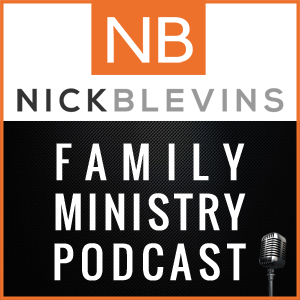Think back to when you were in middle school. If you're like me, that's longer ago than you'd like to admit. What was it like when you had a surprise day where the teacher wasn't in and there was a substitute?
Free day! Party time! No homework!
In my experience, it really depended on the substitute, but often times we immediately thought we had a free period to do whatever. While that wasn't always the case, there were times when it turned out to be true.
When the Cat's Away
Last year our pastor took a 3-month sabbatical. No, we didn't view it as a few months where we could do whatever. Fortunately, we're more mature than we were in middle school (just a bit more). But, we did have to figure out how to continue to operate as one team without our leader present. Three of us on staff make up the leadership team he leads. We had to work together to stay unified as a team.
How to have one team without a point leader
In the family ministry world, many of us believe in the idea of having one, unified family ministry team. However, many of us do not have that structure within our staff. That may be because our church isn't large enough to warrant having a separate family pastor role or it might just because the decision is not ours to make. Either way, we're faced with the challenge of being one team without a point leader in place.
About six years ago our team was in that position. We learned what was helpful and what we should have done differently in hindsight. Here are four things I hope will help anyone looking to have a unified family ministry without having a point leader in place.
Establish a regular meeting
This is critical even when a leader is in place, but it's even more important without one. Figure out a rhythm for meeting together as an entire family ministry team. It might be weekly, bi-weekly or monthly, but set it and commit to attending it each time. Share stories to celebrate wins together. Touch base about anything you need from one another. Read a chapter of a book together each time and discuss.
At the end of the day, you're building relationships and trust. That takes time, time together. You also need a place where conversations can happen that impact the entire family ministry.
Set agreed upon expectations
When a point leader is present, they establish clear expectations for everyone. Again, we're trying to build trust. Trust is built by the keeping of agreements. Without agreeing to specific things, we all set our own expectations of ourselves and each other. If we're honest, the expectations we set for others are higher than the ones we set for ourselves. Without a point leader, it's important to be clear about what we expect from each other. When are we in the office? When will we meet? When are we not available? How will we communicate? How will we make decisions that affect us all?
Team up on projects
During your regular meeting, you can identify some projects you can work on together. Few things unify a team like being in the trenches together. There are countless opportunities where children and student ministry teams could collaborate. Volunteer recruitment, training, appreciation, communication, partnering with parents, etc. Identify one or two projects and build teams for those projects that require staff from both ministries to participate. Meet regularly to track progress and leave every meeting knowing who is doing what, and when it's due.
Work on the transitions
A specific area your team can work on together is the transitions between age groups and ministries. This is critical for a family ministry regardless, but it is a great opportunity for a team without a point leader to become more unified. Working on transitions forces staff from different areas to work together. The real benefit is when one team member learns to see from the perspective of the other ministry.
What is your situation?
Is your team in this situation? If so, comment and share some specifics. If your children and student staff do serve on one team with a point leader, share what you have learned.






